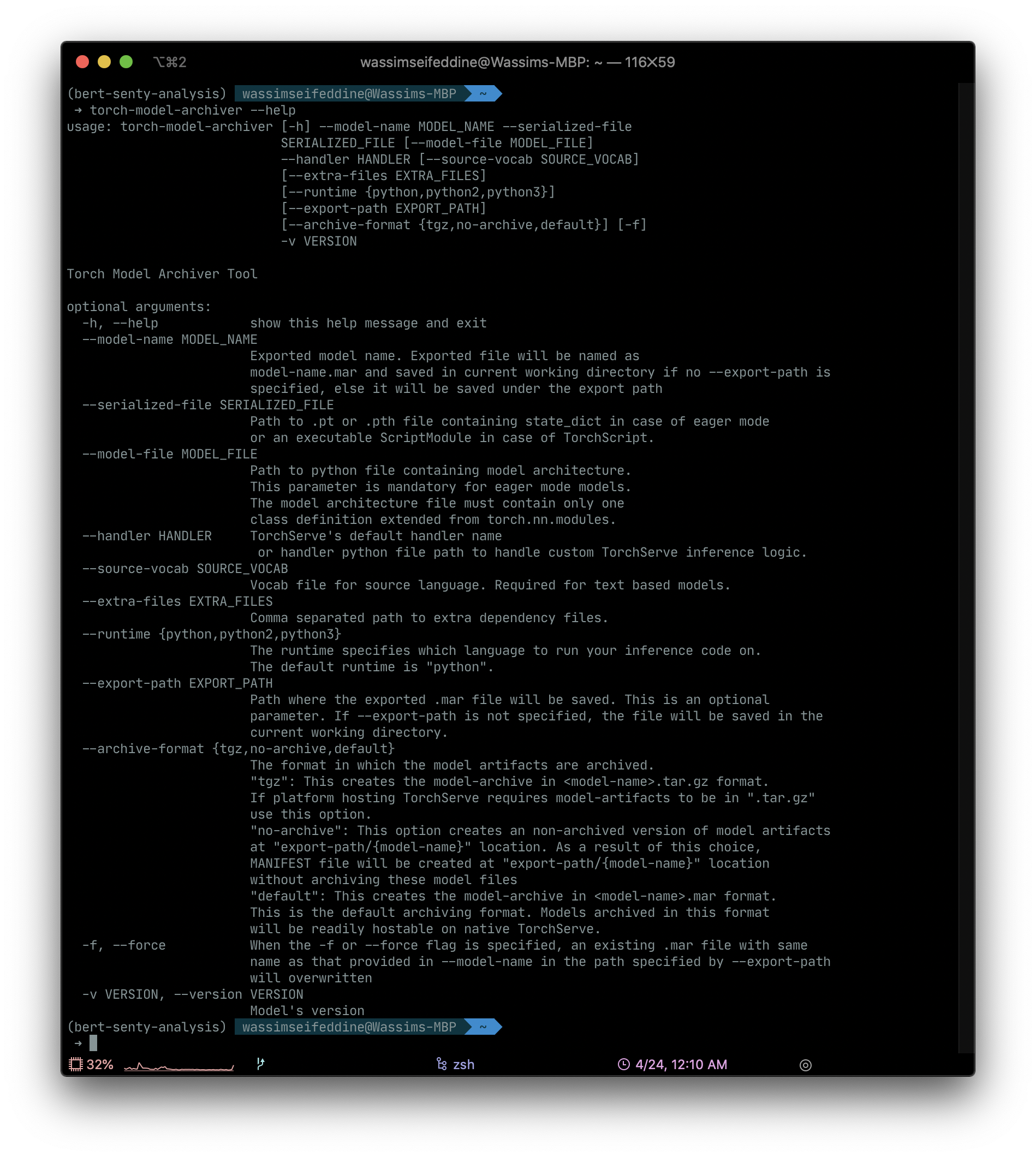[ARCHIVE] Serving BERT Model with Pytorch using TorchServe
Finally
So finally Pytorch is getting a decent (?) production serving capabilities. TorchServe was introduced a couple of days ago along with other interesting things
So TorchServce was announced as a “industrial-grade path to deploying PyTorch models for inference at scale”. In this tutorial we will try to load a finetuned BERT model.
Installing the requirements
2 things you need to get going is the torchserve and torch-model-archiver
pip install torchserve torch-model-archiver
Converting the model to MAR file
Before serving the model, you need to convert it to .mar file, for this step we are going to use the torch-model-archiver we just installed

Some parameter you should pay attention to are
- model-name : A name you want to specify to the model
- serialized-file: the model trained weights file
- model-file: the actual model definition file
- handler: Will cover it in the next section
- extra-files: Any extra files you can to add to your serving. will see how it’s useful
A sample command would be something like this
torch-model-archiver --model-name my-model-name --version 1.0 \
--model-file model.py --serialized-file ./model.bin \
--extra-files params.py --handler MyCustomHandler.py
The --extra-files should include every file that you are using in model.py. In my case they where the hyperparameter of my model
The output of this command would be a single my-model-name.mar file